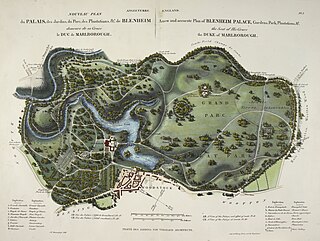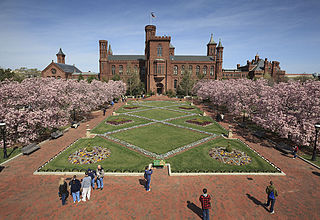
The magic lantern, also known by its Latin name lanterna magica, was an early type of image projector that used pictures—paintings, prints, or photographs—on transparent plates, one or more lenses, and a light source. Because a single lens inverts an image projected through it, slides were inserted upside down in the magic lantern, rendering the projected image correctly oriented.

A slide library is a library that houses a collection of photographic slides, either as a part of a larger library or photo archive, or standing alone within a larger organization, such as an academic department of a college or university, a museum, or a corporation. Typically, a "slide library" contains slides depicting artwork, architecture, or cultural objects, and is typically used for the study, teaching, and documentation of art history, architectural history, and visual culture. Other academic disciplines, such as biology and other sciences, also maintain image collections akin to slide libraries. Corporations may also have image libraries to maintain and document their publications and history. Increasingly, these types of libraries are known as "Visual Resources Collections," as they may be responsible for all "visual" materials for the study of a subject and include still and moving images in a variety of physical and virtual formats. They may contain:

John Fletcher Steele was an American landscape architect credited with designing and creating over 700 gardens from 1915 to the time of his death.

Andrew Jackson Downing was an American landscape designer, horticulturist, writer, prominent advocate of the Gothic Revival in the United States, and editor of The Horticulturist magazine (1846–1852). Downing is considered to be a founder of American landscape architecture.

Heritage Documentation Programs (HDP) is a division of the U.S. National Park Service (NPS) responsible for administering the Historic American Buildings Survey (HABS), Historic American Engineering Record (HAER), and Historic American Landscapes Survey (HALS). These programs were established to document historic places in the United States. Records consist of measured drawings, archival photographs, and written reports, and are archived in the Prints and Photographs Division of the Library of Congress.

The Marie Selby Botanical Gardens is a 15-acre (6.1 ha) botanical garden located at 900 South Palm Avenue in Sarasota, Florida. The Gardens are located on the grounds of the former home of Marie and William Selby. The Gardens acquired the Historic Spanish Point campus on May 1, 2020.
The Marie Selby Botanical Gardens is a Smithsonian affiliate, and is accredited by the American Alliance of Museums.

Historic garden conservation is a specialised type of historic preservation and conservation or restoration concerned with historical and landmark gardens and designed landscapes.

Smithsonian Libraries and Archives is an institutional archives and library system comprising 21 branch libraries serving the various Smithsonian Institution museums and research centers. The Libraries and Archives serve Smithsonian Institution staff as well as the scholarly community and general public with information and reference support. Its collections number nearly 3 million volumes including 50,000 rare books and manuscripts.

D-Scribe Digital Publishing is an open access electronic publishing program of the University Library System (ULS) of the University of Pittsburgh. It comprises over 100 thematic collections that together contain over 100,000 digital objects. This content, most of which is available through open access, includes both digitized versions of materials from the collections of the University of Pittsburgh and other local institutions as well as original 'born-electronic' content actively contributed by scholars worldwide. D-Scribe includes such items as photographs, maps, books, journal articles, dissertations, government documents, and technical reports, along with over 745 previously out-of-print titles published by the University of Pittsburgh Press. The digital publishing efforts of the University Library System began in 1998 and have won praise for their innovation from the leadership at the Association of Research Libraries and peer institutions.

The Garden Club of America is a nonprofit organization made up of around 18,000 club members and 200 local garden clubs around the United States. Founded in 1913, by Elizabeth Price Martin and Ernestine Abercrombie Goodman, it promotes the recording and enjoyment of American gardens as well as conservation and horticulture.

Rudolf Eickemeyer Jr. was an American pictorialist photographer, active in the late 19th and early 20th centuries. He was one of the first Americans to be admitted to the Linked Ring, and his photographs won dozens of medals at exhibitions around the world in the 1890s and early 1900s. He was famous among his contemporaries for his portraits of high-society women, most notably model and singer Evelyn Nesbit. Eickemeyer's best-known photographs are now part of the collections of the Smithsonian Institution.

William Herman Rau was an American photographer who was active primarily in the latter half of the 19th and early 20th centuries. He is best remembered for his stereo cards of sites around the world, and for his panoramic photographs of sites along the Pennsylvania Railroad.

The Smithsonian Gardens, a division of the Smithsonian Institution, is responsible for the "landscapes, interiorscapes, and horticulture-related collections and exhibits", which serve as an outdoor extension of the Smithsonian's museums and learning spaces in Washington, D.C. Established in 1972 as a groundskeeping and horticulture program, Smithsonian Gardens currently manages 180 acres of gardens on the National Mall, 64,000 square feet of greenhouse production space, and the Archives of American Gardens, a research collection of over 60,000 photographs and archival records covering American landscape history from the 1870s to the present.
Paul J. Smith was an arts administrator, curator, and artist based in New York. Smith was professionally involved with the art, craft, and design fields since the early 1950s and was closely associated with the twentieth-century studio craft movement in the United States. He joined the staff of the American Craftsmen's Council in 1957, and in 1963 was appointed Director of the Museum of Contemporary Crafts, a position he held for the next 24 years. In September 1987, he assumed the title of director emeritus and continued to work as an independent curator and consultant for museums, arts organizations, and collectors.

The documentation of cultural property is a critical aspect of collections care. As stewards of cultural property, museums collect and preserve not only objects but the research and documentation connected to those objects, in order to more effectively care for them. Documenting cultural heritage is a collaborative effort. Essentially, registrars, collection managers, conservators, and curators all contribute to the task of recording and preserving information regarding collections. There are two main types of documentation museums are responsible for: records generated in the registration process—accessions, loans, inventories, etc. and information regarding research on objects and their historical significance. Properly maintaining both types of documentation is vital to preserving cultural heritage.

A photograph conservator is a professional who examines, documents, researches, and treats photographs, including documenting the structure and condition of art works through written and photographic records, monitoring conditions of works in storage and exhibition and transit environments. This person also performs all aspects of the treatment of photographs and related artworks with adherence to the professional Code of Ethics.

Louisa Boyd Yeomans King was an American gardener and author who became a leading advocate of gardening and horticulture, especially in connection with the garden club movement. She wrote on horticultural topics as Mrs. Francis King.
Mary Helen Wingate Lloyd (1868–1934) was an American horticulturist who was a founding member of the American Iris Society and creator of a celebrated "iris bowl" garden.
Adelaide Deming was an American painter, associated for much of her life with Litchfield, Connecticut. She was the 1908 winner of the Beal Prize for her watercolor Moon Shadows.
Rachel McMasters Miller Hunt (1882-1963) was an American bookbinder and book collector, specializing in botanical literature.
















